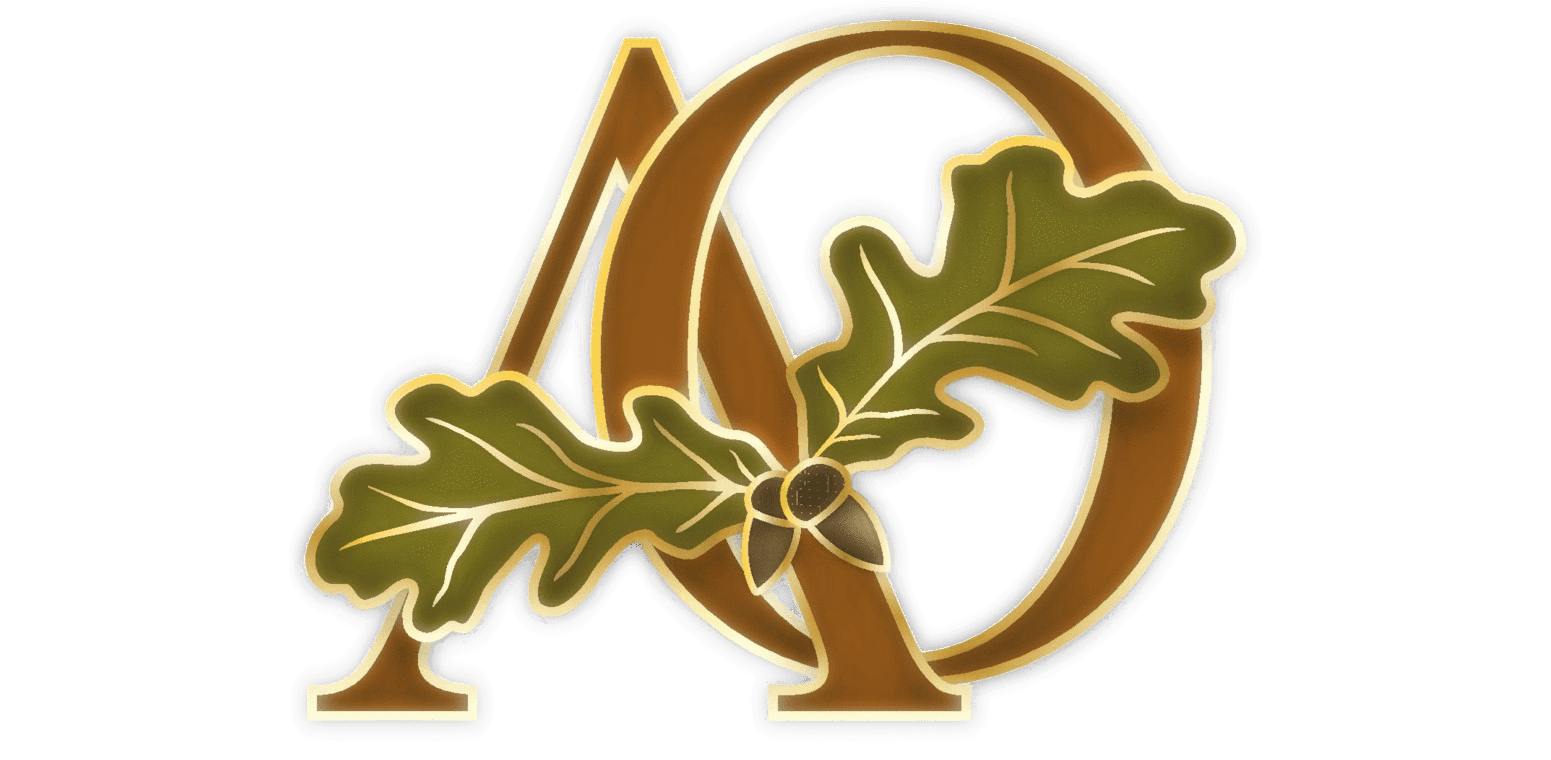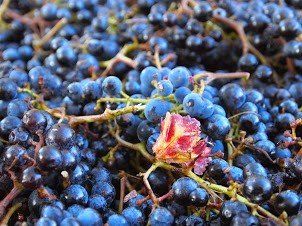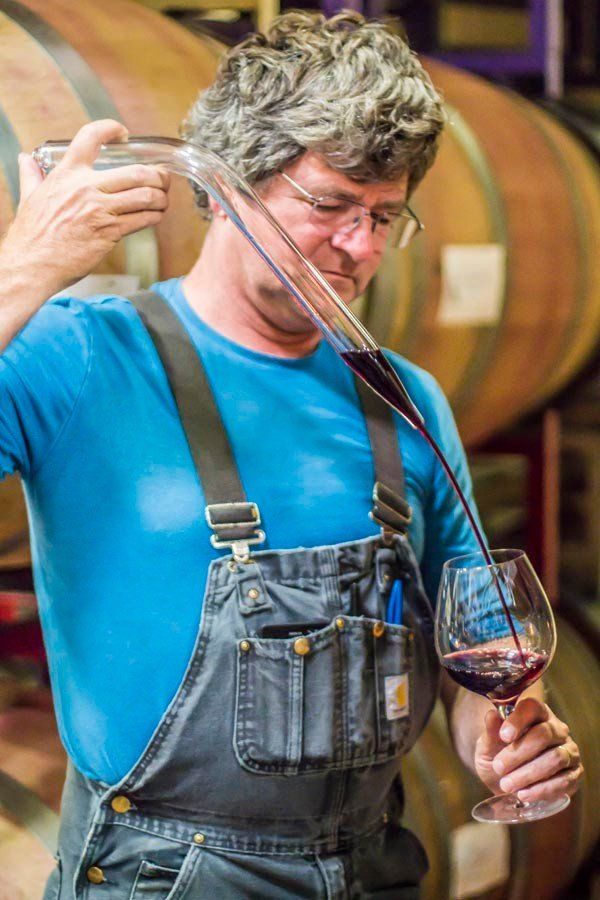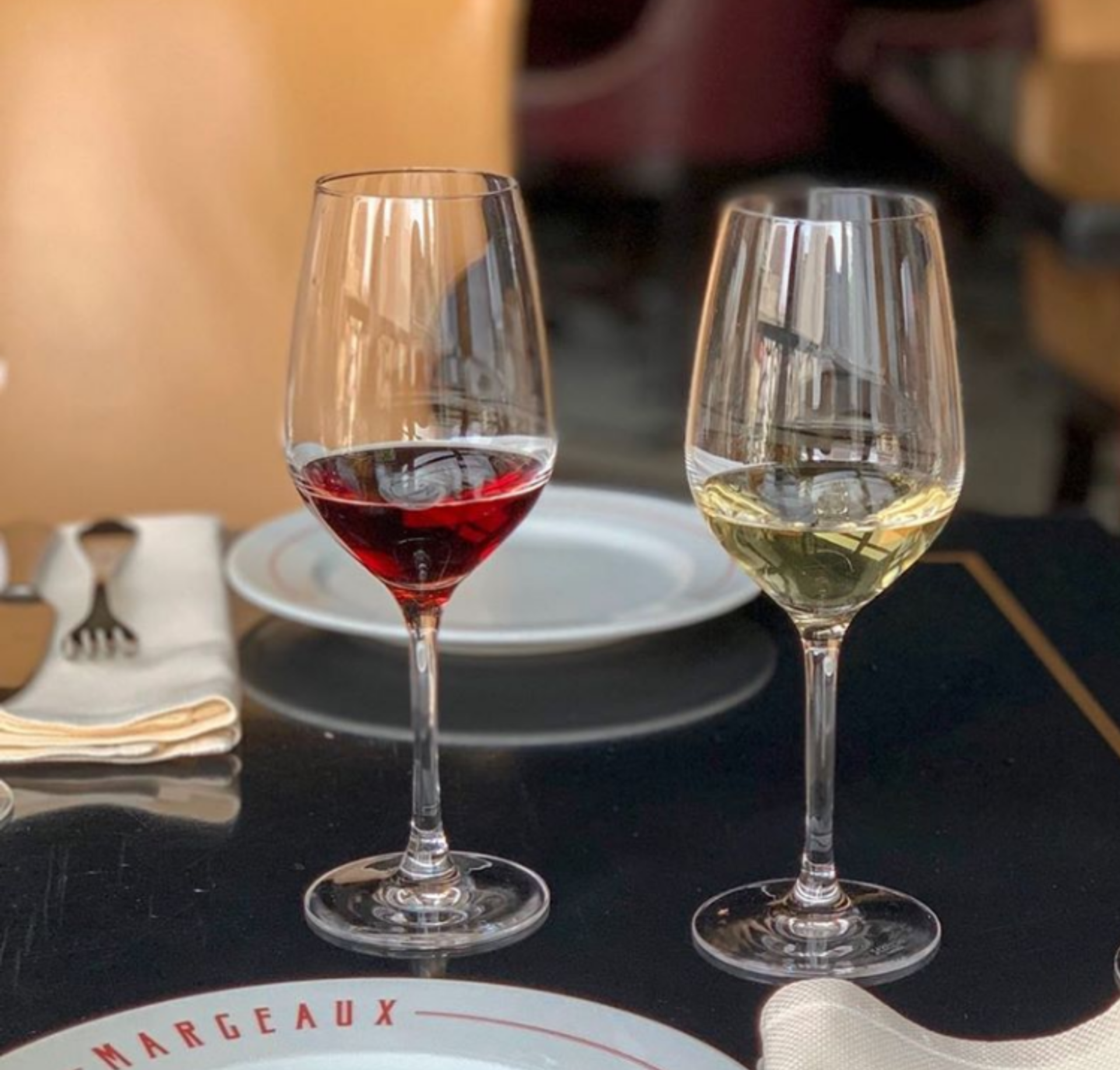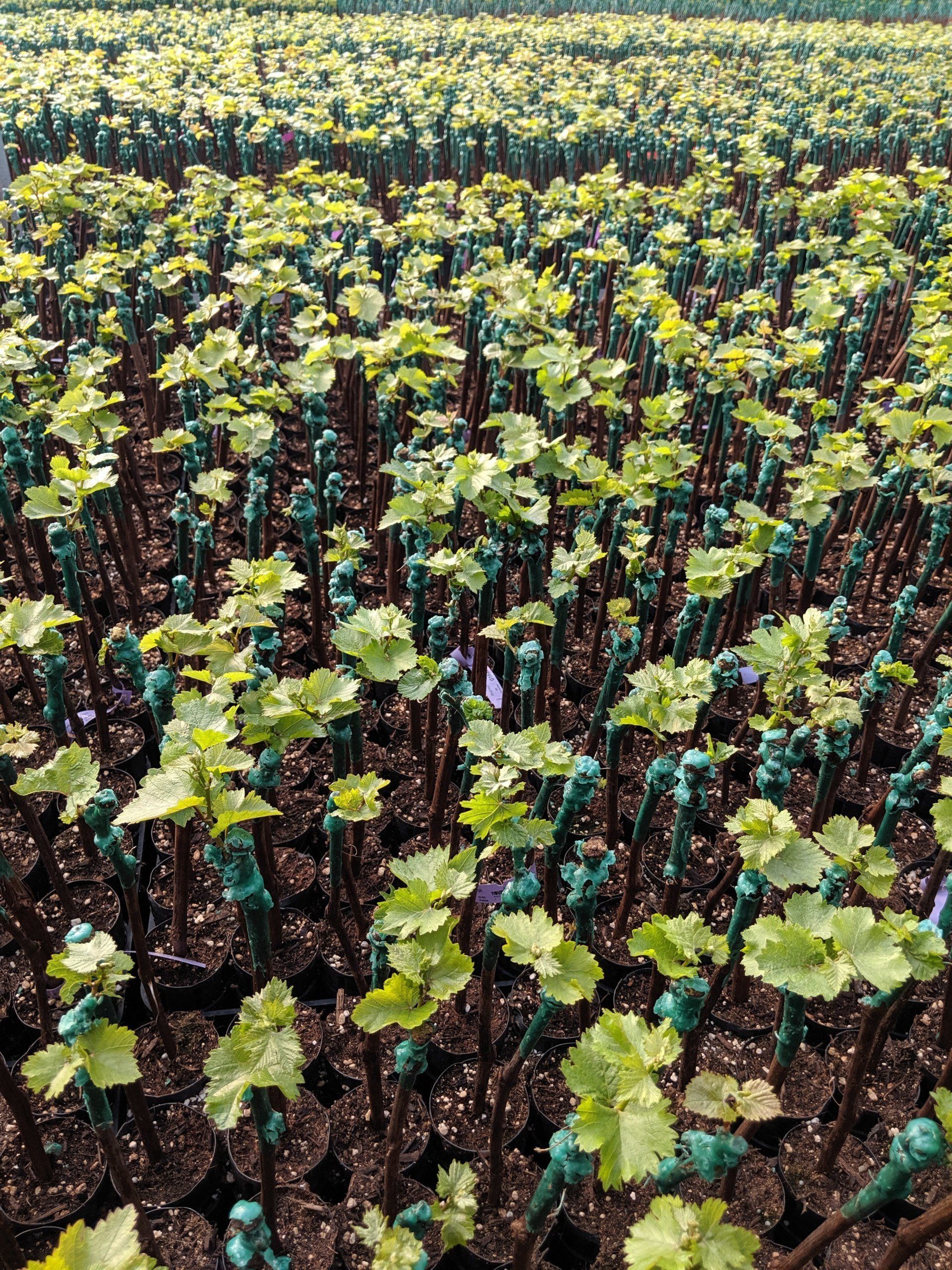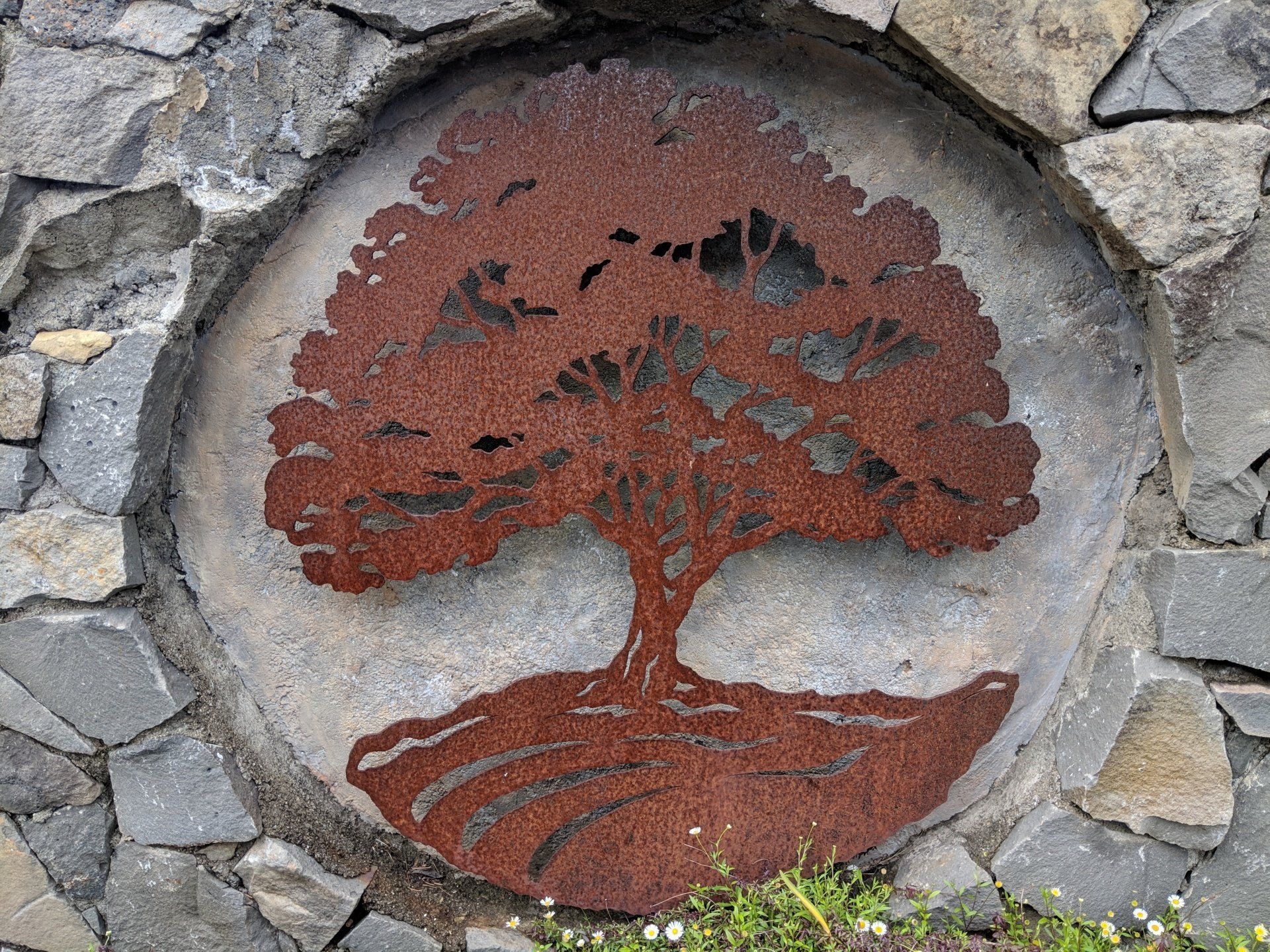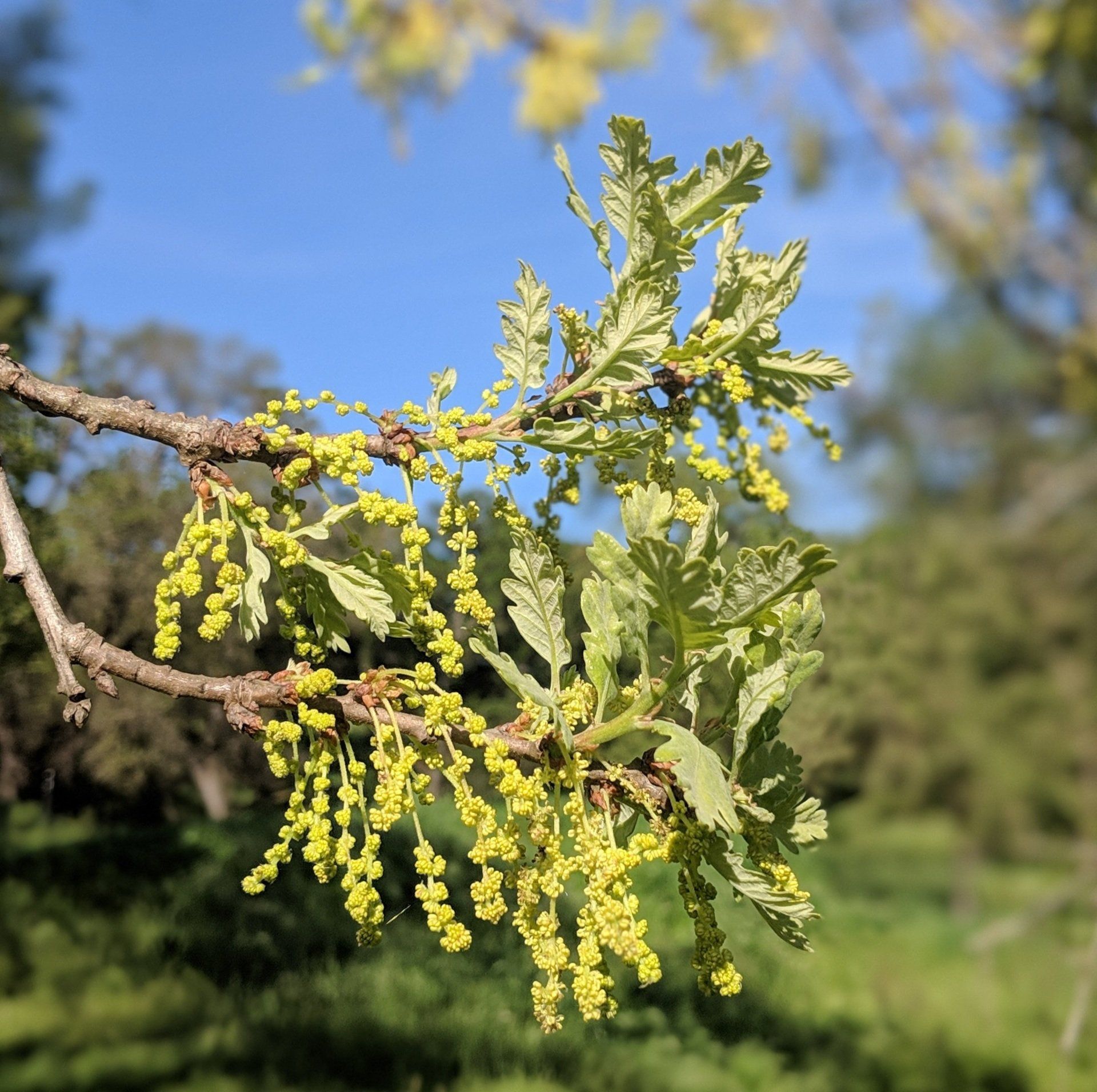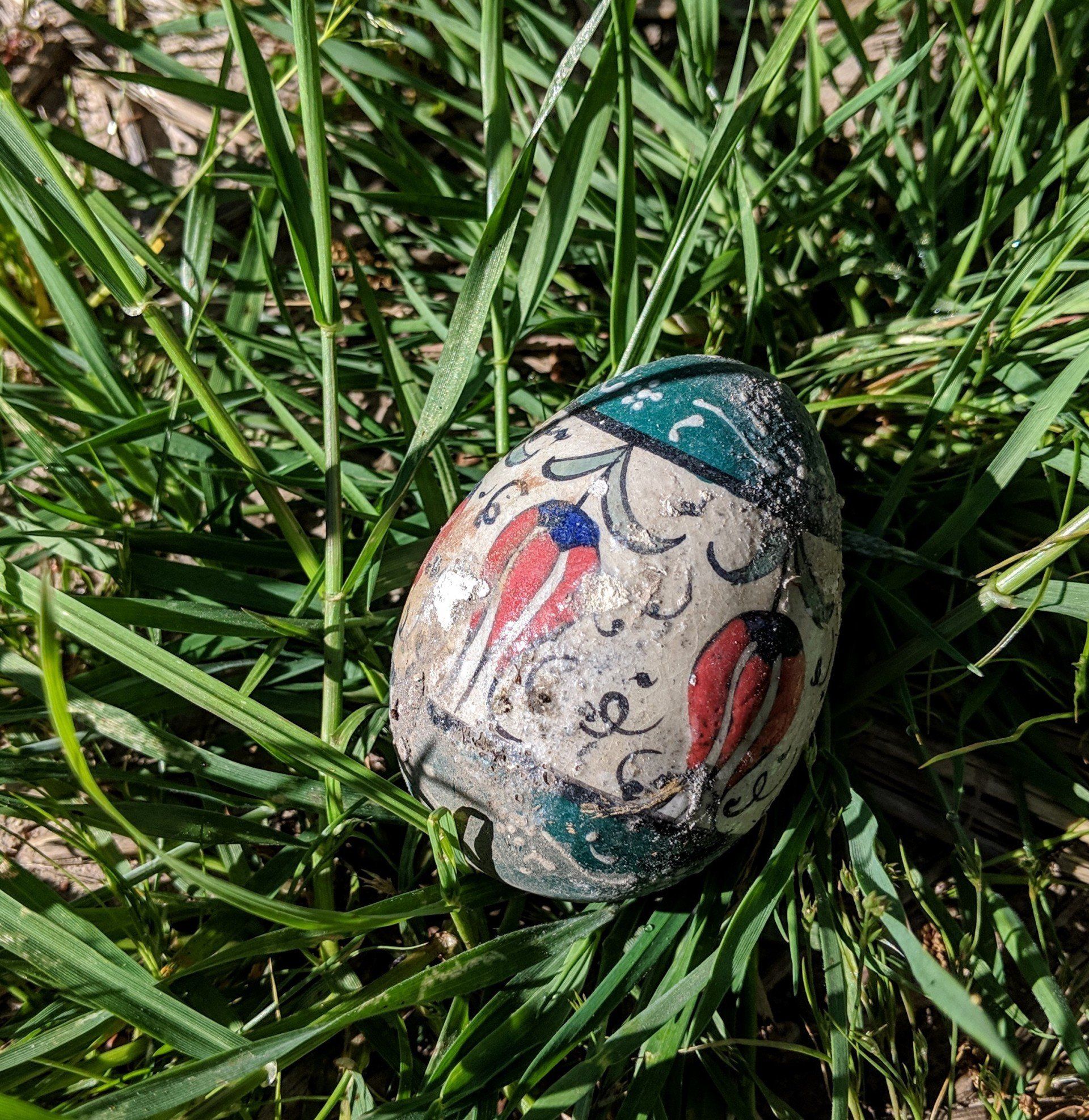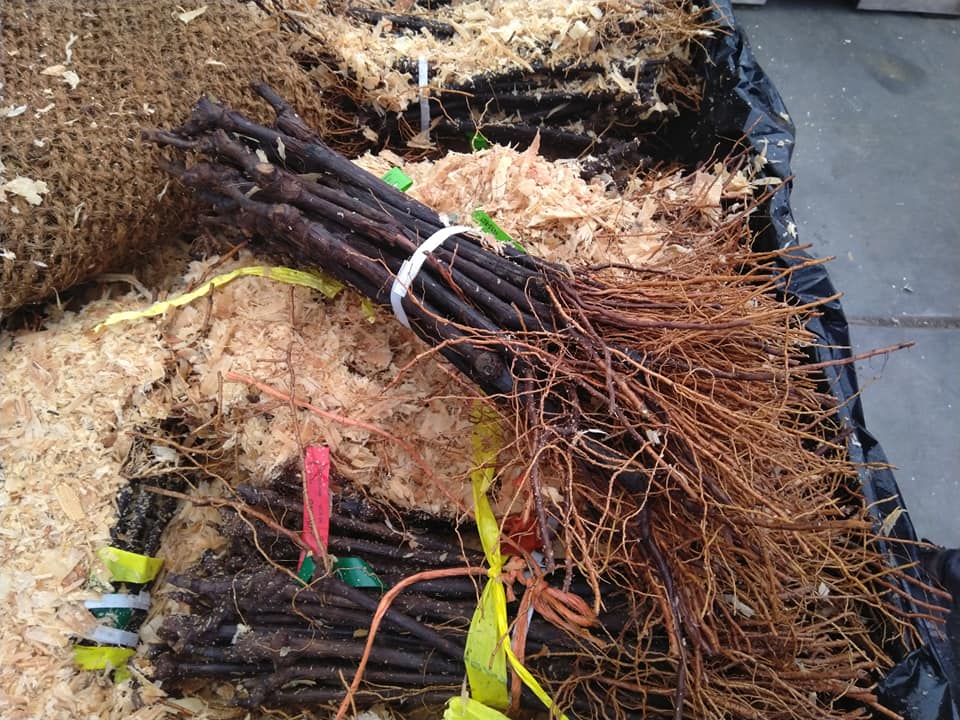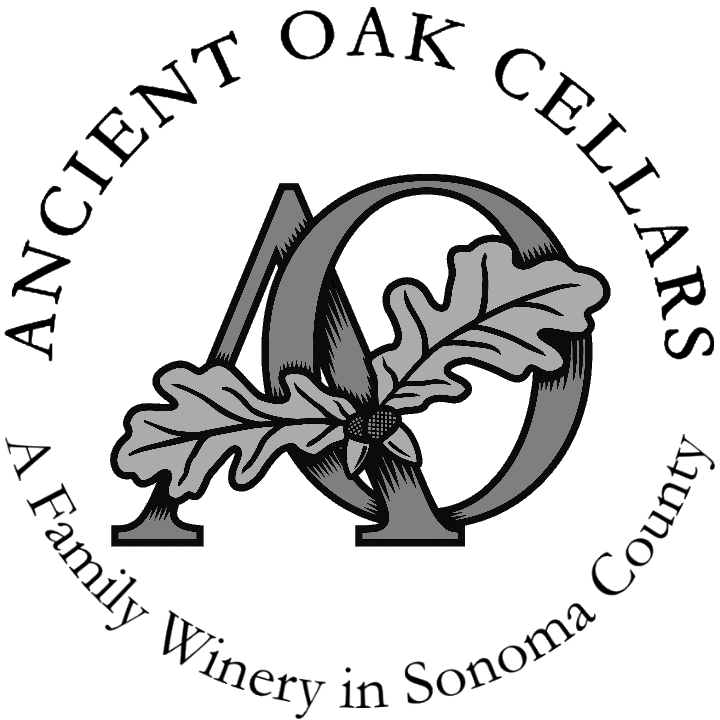Sonoma Mountain’s Hidden Jewel – A Day on the Berger Vineyard at Oak Shade Ranch
- By mjms47
- •
- 08 Mar, 2013
- •
Jordan Wardlaw takes a trip up to the Mountain to learn about the history behind Ancient Oak’s soon to be released Bordeaux blends that could be our finest yet. Get to know our friends Fred and Carol Berger . . . . . In the immortal words of a modern sage, “It is all about […]
Jordan Wardlaw
takes a trip up to the Mountain to learn about the history behind Ancient Oak’s soon to be released Bordeaux blends that could be our finest yet. Get to know our friends Fred and Carol Berger . . . . .
In the immortal words of a modern sage, “It is all about location, location, location.”
OK, so it was our still very much alive-and-well winemaker Kent Barthman
who uttered the axiom. But it rings true, nevertheless, and it sent me off and running on this mid-week adventure.
Our tasting room has been unusually abuzz as of late; and I’m not talking about intoxication. The kind of buzz that indicates something special is brewing- or rather aging
in our case. The wine, one could say, isn’t doing much at this moment. It is sitting in barrels in a cool cellar taking on the spice and tannin of the French oak and tended to by a master of his craft. The slow, steady process of the oak imparting its influence into the wine is one that will reveal rewarding qualities in different stages over time. But I’m reminded by the master himself, as we talk in the cellar one morning, that wine behaves in a variety of ways. Two vines of the same varietal raised from a single clone and budwood may develop dramatically different qualities in a single vintage, it may have nothing to do with anything a wine maker put into a fermenter, or how many new French oak barrels he stored in his cellar. What would be that difference?
“ Location, location, location.”
I think I’m getting it now.
As we continue to talk, I broach the subject of the tremendous excitement about the 2011 vintage Bordeaux
varietals from the Berger Vineyard
up on Sonoma Mountain.
“It’s a unique location, and the vines are in good hands,” Kent tells me. “It’s difficult to get grapes to ripen up there, but what results is a dense, concentrated crop that we think is producing a robust, mature and balanced wine.”
I began to grow even more curious about this idea of location
, so I endeavored to take myself on a field trip. I called Fred and Carol Berger , the vineyard owners, and asked if I could have a bit of their time up at Oak Shade Ranch . I desired a more personal experience of the whole process, a more meaningful connection to the life of the wine. Its life, I would find, was not so much in the dirt as it was in the family that has tended that dirt for over one hundred years. One thirty-minute scenic drive later, I was taking in the views, the smells, and the sounds up on Oak Shade Ranch.
I took the scenic route, without regret. I found my way to Oak Shade Ranch and found the old family home built just above block four of the vineyard. To the west is a creek that is flanked by a dense stretch of oak forest, not far at all from the Cabernet and Merlot vines. These vines appear to be the ranch’s namesake. Coming into the house, I’m greeted with a warm welcome by the Bergers, and a handshake from the 84-year-old Fred that could be described as industrial-strength. The living room in the 40-year-old home provides an impressive panoramic view of the Mayacamas with the bare, rugged vines of southern blocks in the foreground. Below us lies the Valley of the Moon and the town of Glen Ellen nestled in the foothills not far below. I’m anxious to get out on the property and survey the proud vines, but first I took time to talk at length with Fred and Carol about the history of these wonderfully quirky twenty two acres that sit at 800 feet elevation along the eastern slope of Sonoma Mountain. Even as I sit down, I’m beginning to build a connection to the life of the wine.
I began learning the story of the Berger family from 1891 to the present. Fred was born on this very property in 1929 in a small house just down the hill on what was still a very rugged old world ranch. It would be several more years until Sonoma Mountain Road was paved or any indoor plumbing or electricity was introduced to the ranch, and vineyard planting was in the even more distant future. “My parents had the opportunity to plant vines after prohibition was over”, Fred remembers. “But they were very much against anything having to do with alcohol, or ‘contributing to the sins of others’ as they called it. So for years this land was mostly prunes and pears. I remember going through the orchards with my mother during the harvest. I was just a little brat. I’d put one in the pail, one in my mouth, one in the pail, one in my mouth . . .”
In addition to the eleven acres of prune and pear trees was a mostly open, wooded space at the lowest reaches of the mountainside not far above the expanse that is Jack London State Park. This forest proved to be a valuable commodity for Fred’s father, Henry, who cut and sold wood to pay the bills. Up to two-hundred sheep grazed the land to keep the grasses down, although before the days of adequate fencing many of them would prove to be easy prey for dogs from surrounding properties, making the population difficult to maintain. “I came home one summer to find dead sheep lying around all around the ranch,” Fred recalled. “Other ranchers would let their dogs run wild, so many that my father shot twenty-one of them in one year.”
Rugged farm life gave way to other opportunities in the early 1950’s just before the Korean War, and Fred have developed an interest in flying. He, just like my two grandfathers of roughly the same age, decided to enlist in the Air Force before he would inevitably be drafted. Training in Southern California proved to be where he would meet his wife Carol who was raised in Pasadena and living in Glendale at the time. The next twenty years would turn out to be a military career for the Bergers, seeing Fred work his way up through the ranks and spending most of his time as an Air Force officer stationed overseas in a vast array of locations from Germany to France to countries in the Far East. The Bergers would eventually have four children during this time.
But the ongoing life of Oak Shade Ranch would begin to play a role. Of the three-hundred total acres that belonged to the Berger family, the seventeen-acre parcel on which most of the vines lie today was passed along to Fred having been in his mother’s name. Other portions of varying size were inherited by Fred’s brothers and other family members. Although the couple would only visit the ranch one time in twenty years, it was a meaningful trip during which Fred and Carol began to plan their future. Walking on the mountain together one afternoon Fred took Carol to a familiar bluff where there was a crystal clear view of eastern slope of the mountain, telling her now that he had inherited that section of the ranch that he was planning to build them a home on the very spot where it stands today. Soon after, he would retire from the Air Force in 1972 and moved his family back to Oak Shade Ranch.
Using his skills and with the help of his father, at this point in his 80s, Fred built the family home in 1972. His father was a self-taught carpenter who had eventually made his living in building homes including, incidentally, that of Jack Warnecke in Alexander Valley
who planted the vineyard that Ancient Oak Cellars would eventually buy Cabernet Sauvignon from. I’m reminded of the special feeling one gets when knowing that old-world family farming is the essence of a wine, or any agricultural product for that matter. Soon after Henry passed away, Fred bought the thirty-four acre parcel that had been left to one his brothers.
Vineyards had been planted in the surrounding area for generations, and Fred would talk often of trying his hand at growing grapes. But it was his uncle, Herb Bruning, who already made wine himself and gave Fred the encouragement and the raw materials that he would need to make it happen. Fred recalls: “He got so damned tired of listening to me say I going to plant a vineyard that one day he showed up with a pickup truck and started bringing in the vines. 1,800 bare root Cabernet Sauvignon vines to get me started. I had no tractor, no fence, no irrigation, nothing to cultivate with. But my biggest challenge was the soil which was only about 6 inches into the ground and right on top of tough, gray clay so the roots wouldn’t penetrate. “
Fred dutifully went about his job, digging the holes and planting the vines. The variety of different soils along Sonoma Mountain would pose challenges over the years, with many vines having to be replanted. Fred’s father and uncles had resorted to blasting away massive sections of clay with dynamite in the 1920’s in order to plant fruit trees on those very sites. Challenging as the land could be, those original three acres that Fred and his family planted in 1973 would prove to be durable and fruitful. Block one is currently farmed by Ken and his crew here at Ancient Oak, and we couldn’t be more proud of what came out of it.
The Bergers slowly expanded their vineyards, planting when they could afford to. Merlot and a small block of Cabernet Franc were added several years after the first planting. 1979 would be the first vintage of wine produced from the grapes up on Oak Shade Ranch, and they would go to become the smallest grower for two highly acclaimed labels in Kenwood and Glen Ellen. But they were also one of the best, and the relationships were long-lasting. They built their reputation for growing consistently robust grapes, despite the logistical hurdles posed by the uniqueness of their location. The family successfully dry farmed the ranch for many years before finally installing an irrigation system. Fred painted a wild picture of hundreds of feet worth of hoses crawling all over the vineyard. Carol shares a brief story that I found to be the essence of the family’s tradition:
“ If you were high up on the hill, there was barely any water pressure. Our daughter was always reading, and when she would go up there to water she would just put the hose down and read her book while waiting for the hole to fill up. But that was the easy work. Fred would do most of the pruning himself in the winter. The kids would help when they could, but they usually found whatever work they could so they weren’t stuck out there in the cold with sore, tired hands. My sister always used to say how amazing it was that all of our kids had jobs during a time when no one could find jobs. But sure enough, during the pruning season they always seemed to have a job!
”
Each of the Berger children, two girls and two boys, would play an important role in tending the vineyard, often working all summer and through the harvest. Fred had his more modern farming operation running by the early 1980’s and continued to take pride in his deft hand at getting the most out of his low-yielding, temperamental vines. Farming is by nature an unpredictable venture. Vines will behave in remarkably different ways from one vintage to the next, though some things would remain very much the same for Fred. His grapes tended to ripen quite late but would deliver unique qualities that winemakers would prize highly year after year. Suddenly one late harvest, everything seemed to change for the Berger family. The volatility of farming hit the family hard in the disaster of 2010.
2010 was indeed a particularly meager, for some even devastating, year for Sonoma County grape growers. I remember reading in the local press about an unprecedented number of crop insurance policies being filed as more and more vintners were simply walking away from a crop that didn’t ripen, developed rot, or flamed out on the vine during Indian summer. Up on Sonoma Mountain in mid-October, picking had just commenced when the vineyard contractor abruptly called everything off. The grapes fell just barely short of the minimum sugar levels required for harvesting, and almost everything was left to rot on the vines; their growing contract was voided. It was a huge blow to the Bergers, marking the end of what had been a long and successful relationship with their buyers. Carol described it as a “heartbreaker.”
Fred, now 82, went ahead and had the vines pruned but was unsure about the future of the farm. With no contract, there was no money to have everything done properly during the growing process. Fortunately, word of mouth found its way to Ancient Oak Cellars owner Ken Moholt-Siebert
who came out to Sonoma Mountain with a mutual friend and didn’t want to see the grapes go to waste. The two families agreed to have Ancient Oak Cellars begin farming the now twenty-two acres of Bordeaux varietals, and our crew worked feverishly during the summer of 2011 with the hope of a viable crop. The fruits of their labor have been in barrels for about sixteen months so far, and everyone at Ancient Oak is very excited about the prospects for this wine and that of future vintages. Though he may be slowing down and allows Ken’s crew to do the heavy lifting, Fred seems happiest when he is on his tractor and at the center of the work.
Nearly every detail of the Berger family story seemed to turn to color as I walked along with Fred down the mountainside and through the vines which are showing early signs of life. We first make our way down block four and alongside the oak shaded Merlot vines. We eventually come into block one, the old gnarled and battle-tested vines that are now forty years old and reliable as ever. We come across several small cabins that are each in their own right chapters in the one-hundred and twenty-two year story of the Oak Shade Ranch. I listen to each of them as Fred relates in his animated manner. He struggles with an allergy as we begin heading uphill, but he never pauses. He still displays the steadfast but calm demeanor of a farmer who in forty years has never seen any two seasons that were alike.
I’m amazed at the stunning views, and the sheer diversity of the land. It’s an unseasonably warm day in late February and some of the Cabernet vines are springing to life with small, vibrant leaves. I’m reminded what a unique treasure this land really is. Reaching the top of the vineyard at 800 feet above sea level, I’m more than comfortable in shirtsleeves but I can see clearly down to a wooded space that was covered in frost just two hours ago. The Berger vineyard is a special place, complete with all of its perplexing idiosyncrasies. I’m enjoying getting to know a farmer responsible for such gorgeous land, especially this land that can be at times baffling. I sense a bit of what it is to live the uncertainty of agriculture. This farmer’s plight is like that of maintaining a beloved car that that doesn’t always run smoothly, but has never ultimately let you down. I’m proud to share his story on the behalf of Ken and Melissa’s family that will work for years to come to ensure that Oak Shade Ranch continues to manifest great things.
This coming weekend, I’ll feel uniquely privileged when pouring barrel samples of the 2011 Tò Érgon and Poietes Cabernet
blends to tasters and wine buyers alike. They will not only see in my eyes and hear in my voice my genuine belief in the promise of the wine, but I’ll be able to relate the story of the Berger Vineyard in a way that I couldn’t have derived from a book or the words of winemaker. I’m confident that anyone who wants to talk about the wine in our tasting room will sense our individual connection to the life of the wine and that every individual at Ancient Oak is a part of a beautiful and nuanced tapestry of stories spanning many generations of families who will be forever connected. The living, breathing spirit of this wine will be a proud reflection of families bound together by an honest and passionate devotion to bringing out the best of the land.
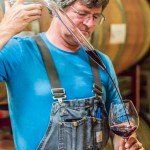
Ancient Oak Cellars, and Jon McDaniel with Second City Soil, gathered 60+ of the top sommeliers from around the country to taste four wines that Ancient Oak had sent to each -- and to enter into a discussion of the wines, farming and winemaking philosophies, and a wide-range of other related topics. We had a blast!
Re-live your experience, or take it in for the first time. Then be in touch to continue the discussions. Cheers!
